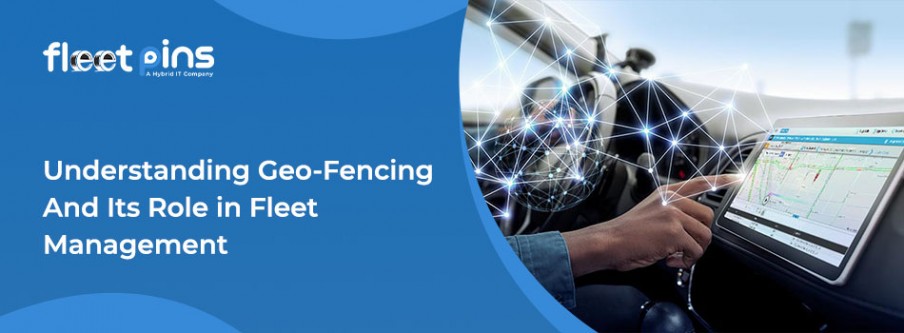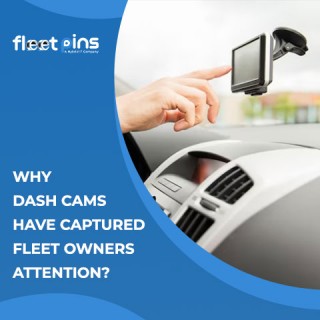
- On 2025-02-19
Understanding Geo fencing and Its Role in Fleet Management
A geofence is a virtual boundary set around a specific area. It can be as small as a warehouse or as large as an entire country. Using GPS, WIFI, RFID, or cellular data, geofencing technology can send alerts.
The alerts are sent when a vehicle or asset enters or leaves the defined area. Fleet managers use geofences to track vehicles, improve efficiency, and enhance security in real time. At fleet pins, let’s see what geofencing technology is and how to set up geofences for fleet management.
Why is Geofencing Important for Fleet Management?
Geofencing offers several benefits that make fleet operations smoother and more secure. Here are the benefits of geofencing for fleets:
Reduce Manual Work
Geofencing helps minimize unnecessary calls between drivers and dispatchers. Fleet managers receive automatic alerts when a vehicle reaches a destination. This also helps businesses notify customers about delivery times and optimize scheduling.
Enhances Security
With geofencing in fleet tracking, managers get instant alerts if a vehicle moves out of its designated area. This feature helps prevent theft and unauthorized vehicle usage, ensuring assets remain protected.
To improve fleet operations further, learn more about How Dashcams Enhance Driving Safety and Security to keep vehicles monitored and ensure timely deliveries.
Supports Compliance
If certain roads or areas are off-limits for fleet vehicles, geofencing technology can alert managers. If a driver enters a restricted zone, this ensures compliance with traffic regulations and company policies. Learn how How Dash Cameras Impact Your Car Insurance can help demonstrate compliance with fleet safety regulations and prevent liability claims.
Improved Driver Safety
Geofencing can warn drivers when they approach hazardous areas. Managers can reroute them to avoid risky zones, making travel safer.
Provides Valuable Insights
By analyzing geofencing data, businesses can identify inefficiencies, such as long detection times at loading docks. This helps in making informed decisions to improve fleet productivity.
How Do Fleet Managers Use Geofencing?
Geofencing has many practical applications in fleet management. Here are some key ways businesses use it:
- Construction companies: Prevent theft of expensive equipment by getting alerts when assets are moved unexpectedly.
- Oil and gas firms: Track when field crews enter or exit remote work sites.
- Trucking companies: Reduce wait times at loading docks by notifying receivers in advance.
- Delivery services: Automatically inform customers when a package is about to arrive.
- Rental business: Monitor vehicles that cross state or international borders.
- Corporate fleets: Ensure drivers stay within designated work areas.
Steps to Set Up a Geofence
Implementing geofencing is simple with the right fleet management software. Here’s how to do it:
- Choose the Right Software
Look for a geofencing solution that is easy to use, integrates with the fleet tracking system, and provides real-time alerts via mobile devices. - Define the Geofence Area
Use digital mapping software to create a geofence around a specific location. This could be a warehouse, job site, or customer location. - Configure Notifications
Set up alerts to notify managers when a vehicle enters or exits the geofence. You can customize these alerts based on specific times, routes, or asset types.
Best Practices for Using Geofencing
To maximize the benefits of geofencing, consider these tips:
-
Set Clear Goals
Before creating a geofence, determine its purpose. Is it to improve security, track deliveries, or monitor work hours? Defining clear objectives helps you get the most out of the technology. But putting a boundary on everything and alerting anyone you can think of can undermine the value of the technology.
Have a clear idea of what you want to accomplish with each geofence before you set it up. Then, you’ll better understand which notifications that boundary should trigger and to whom. -
Inform Your Team
When setting up a geofence and configuring your alerts, take time to think about who will most benefit from the notifications provided. A good geofence can improve efficiency and productivity for drivers and fleet managers. But they’ll need to get the necessary notifications for your efforts to have real value. If one manager is getting a weekly email summary of data that could be helpful to others in real time, you’re not fully leveraging the power of this software. -
Analyze the Data
Regularly review geofencing reports to spot trends and inefficiencies. This can help you reduce fuel costs, prevent delays, and improve overall fleet performance. A geofence is a useful way to monitor drivers and your assets in real time. However, that’s not the only advantage of the data you collect. Fleet managers can review and analyze the information gathered to better understand driver behavior and vehicle use.
Conclusion
Geofencing is a powerful tool for fleet management. It helps businesses track vehicles, enhance security, improve compliance, and optimize operations. By implementing geofencing effectively, fleet managers can boost productivity and make informed decisions to run their fleets more efficiently.




